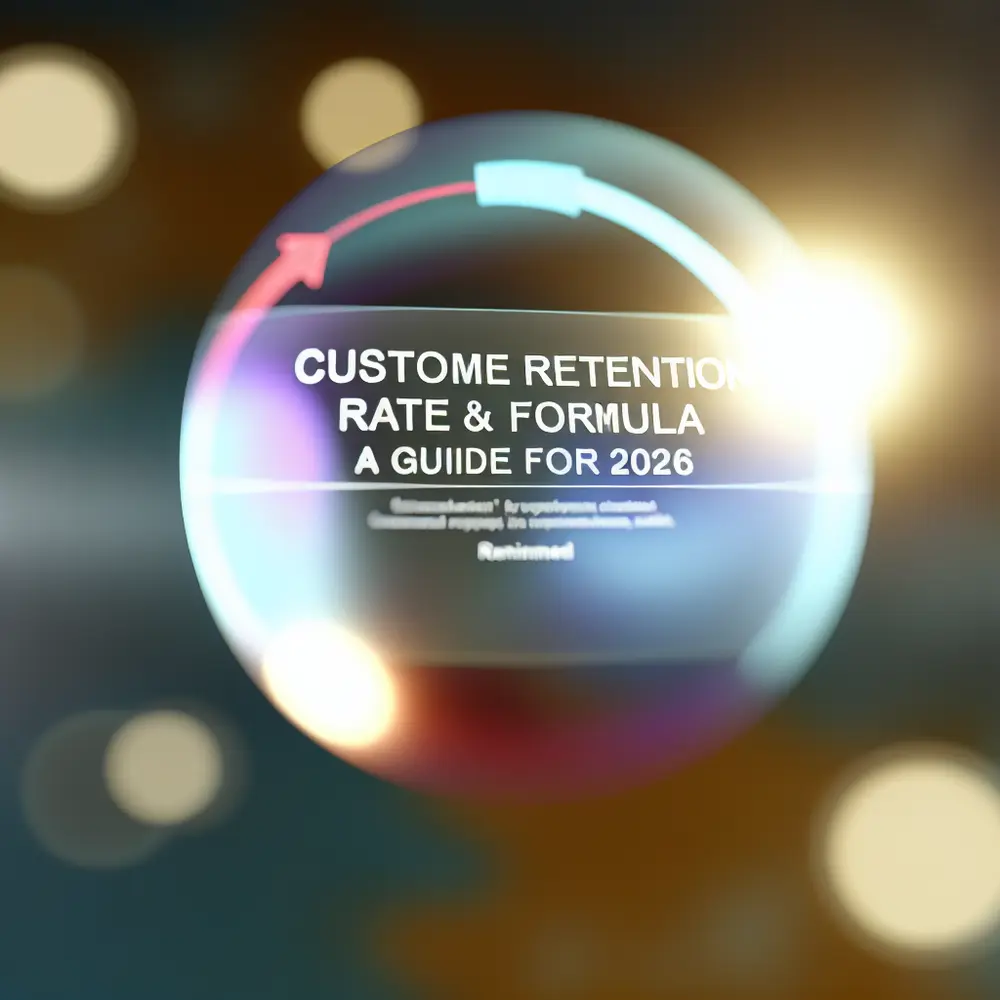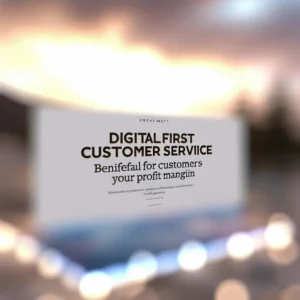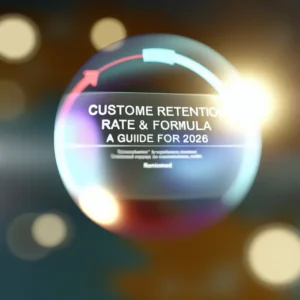Understanding the customer retention rate is essential for businesses aiming for sustainable growth. High retention rates indicate customer loyalty, leading to reduced churn and increased profitability. Customers who stay engaged not only contribute to stable revenue but also refer new clients, making retention strategies a cornerstone of financial success.
In today’s competitive landscape, integrating technology can elevate customer retention. With tools like CRM for WhatsApp, businesses can facilitate personalized communication, effectively addressing customer needs. This not only boosts customer satisfaction but also enhances operational efficiency, vital for long-term success.
However, understanding the dynamics of customer retention is just the beginning. Business owners must implement effective strategies and analyze key metrics to ensure they proactively improve retention rates. This comprehensive approach can lead to a sustainable competitive advantage, driving growth and profitability.
Understanding Customer Retention Rate: Definition and Importance
You define the customer retention rate as the percentage of customers that a company retains over a specific period. It typically reflects customer loyalty and satisfaction, crucial for sustainable business growth. By understanding and improving this metric, you can significantly enhance your company’s financial success.
A high retention rate indicates effective customer relationship management. It correlates directly with increased revenue. When you prioritize retaining clients, you will reduce churn, the phenomenon of customers discontinuing their relationship with your brand. This reduction improves profitability and fosters a more favorable brand reputation.
Financial analysis often relies on the retention rate as it directly influences acquisition costs, which can be significantly higher when acquiring new customers. Retaining existing clients proves to be a vital component of financial planning. Loyal customers not only spend more but also increase their lifetime value, stabilizing and boosting your company’s revenue.
The correlation between retention and referral business is significant. Satisfied customers often refer new clients, contributing to growth without incurring significant marketing expenses. This organic promotion is invaluable in today’s market. Hence, enhancing retention rates improves not just immediate sales but also the long-term viability of your business.
For instance, Clínica Vitalis implemented a CRM for WhatsApp, boosting their retention rate by 30% within six months. This strategic move reduced their churn rate and allowed them to concentrate on nurturing long-standing relationships with patients, significantly increasing their referral rates.
The Customer Retention Formula: A Step-by-Step Breakdown
You utilize the customer retention formula to maintain a healthy growth trajectory. The formula is straightforward, focusing on the number of customers retained over a given period. This metric profoundly impacts profitability and sustainability.
To calculate the customer retention rate, you use the formula:
CRR = [(E – N) / S] x 100
Here, CRR is the retention rate, E denotes customers at the end of the period, N denotes new customers acquired, and S is the number of customers at the start. This formula helps you assess your effectiveness in retaining customers against churn.
Churn plays a vital role in calculations. If a business experiences high churn but acquires many new customers, the retention rate might still seem favorable. Therefore, it’s crucial to focus on both acquiring new customers and enhancing satisfaction to effectively reduce churn rates.
Incorporating feedback from customers is essential for shareholders. Regularly analyzing responses aids in identifying areas needing improvement, which can significantly reduce churn. For instance, the Transportadora Prime company adopted CRM systems, allowing them to streamline client communications. They noticed a 25% improvement in customer retention after implementing targeted feedback strategies.
Financial analysis must account for the costs associated with acquiring new customers. Research shows that retaining an existing customer is significantly cheaper than acquiring a new one. Thus, metrics centered on retention lead to robust financial health and better returns on customer service investments.
Key Factors Influencing Customer Retention Rates
To improve loyalty, you must understand the key drivers that enhance the customer retention rate. Focusing on these elements can elevate your company’s long-term profitability by a large margin.
Quality of Customer Service
Outstanding customer service is vital. Businesses that prioritize responsiveness see lower churn rates. Consistently meeting customer expectations fosters loyalty. Regular training for service teams can lead to improved interactions, positively affecting the customer retention rate significantly.
Personalization and Customer Experience
Customers demand personalized experiences today. Using customer data effectively allows you to create targeted strategies that enhance the journey. Providing tailored recommendations can strengthen emotional connections, which positively influences the retention rate.
Consistent Engagement
Maintain ongoing engagement through various communication channels like email newsletters and social media. Consistent interactions foster trust and awareness, preventing churn. Companies actively engaging their customer base typically witness improved satisfaction metrics.
Product Quality and Value
The quality of your product or service directly impacts the retention rate. Customers perceive value, leading to repeat purchases. You must continuously innovate to meet changing expectations, which can significantly prevent attrition.
Adaptability and Feedback Utilization
Adapting to market shifts and incorporating customer feedback is essential. Analyzing feedback helps you identify pain points promptly. Acting on customer inputs builds trust and loyalty, crucial for improving retention rates.
A case in point is Loja Online DaJu, which adopted customer experience improvements and saw a 20% increase in retention rates by leveraging personalized recommendations based on purchasing patterns.
Churn vs. Retention: Understanding the Relationship
Understanding customer retention requires diving deep into churn and retention concepts. Churn is the percentage of customers who cease using a service; retention focuses on keeping customers engaged. Monitoring these metrics is vital for any financial analysis aiming to maximize profitability.
High churn rates suggest underlying issues—whether poor experiences or inadequate product features. Business owners must focus on reducing churn to bolster revenue stability. Conversely, high retention rates signify success in meeting customer needs, reflecting loyalty and satisfaction.
For example, Escritório de Contabilidade ConteMix actively improved customer service quality, leading to a reduced churn rate and subsequently increased retention. Their customer journey improvements underscored the importance of engagement in driving loyalty.
Using Customer Retention Rates in Financial Analysis
Understanding customer retention rates is critical for evaluating your organization’s long-term success. Retaining customers decreases reliance on new acquisition efforts, subsequently lowering marketing expenses. This revenue allows you to reinvest in growth and improvement.
Measuring retention can also correlate with various business metrics like Net Promoter Score and customer satisfaction ratings. Positive customer experiences foster loyalty, enhancing the retention rate. Therefore, tracking these metrics together provides deeper insights into overall health.
Grupo de Hotéis Prime implemented a CRM for WhatsApp that allowed for effective tracking of customer preferences. This contributed significantly to their retention strategy, leading to a notable increase in customer lifetime value.
Best Practices for Improving Customer Retention in 2026
To sustain growth, you must implement strategies focused on improving the retention rate. This signifies satisfied customers more likely to repurchase, thereby reducing churn.
One effective method involves personalized communication. Using CRM for WhatsApp enables tailored messaging reflecting customer preferences. This method fosters immediate support, reinforcing brand loyalty.
Proactive customer support anticipates needs, addressing potential issues preemptively. Regular feedback assessments help gauge satisfaction and improve service quality in direct relation to business metrics.
Investing in loyalty programs can significantly enhance retention by rewarding repeat customers. Accessible mobile platforms like WhatsApp enhance engagement, ensuring customers feel valued.
Regularly analyzing retention metrics is crucial. You must consistently monitor the impact of retention strategies to ensure they remain effective. Understanding how these metrics integrate into financial performance guides priority initiatives for sustainable growth.
Measuring the Impact of Customer Retention on Business Metrics
Customer retention rate is fundamental for evaluating a business’s long-term performance. By focusing on retention, you minimize churn, indicating strong loyalty. High retention rates directly correlate with improved profitability.
Higher retention rates reduce the need for new acquisitions, consequently lowering marketing expenses and allowing for reinvestment in business growth. This often correlates with increased customer lifetime value, pivotal for forecasting.
Effective measurement of customer retention should implement robust CRM systems. By streamlining interactions and tracking feedback, businesses can build cohesive retention strategies enhancing financial outcomes.
Case Studies: Success Stories of High Customer Retention Rates
Many businesses showcase successful strategies that notably improve retention rates. A leading e-commerce platform implemented a rewards program linked to engagement, producing significant retention boosts.
A subscription service utilized a CRM for WhatsApp to send personalized updates, greatly enhancing subscriber loyalty and reducing churn. This proactive approach resulted in a thriving community among users, fostering long-term loyalty.
A SaaS company focused on continuous value delivery, regularly soliciting feedback to align historical patterns, which resulted in a high retention rate. Their proactive adjustments during challenges significantly boosted customer satisfaction.
Retail chains using data analytics identified products promoting repeat business. The educational programs launched heightened understanding, leading to improved retention metrics.
In hospitality, one hotel chain crafted personalized experiences using prior stay data, resulting in high return visits and elevated retention rates.
Conclusion: The Future of Customer Retention Strategies
As the market evolves, understanding the customer retention rate is vital for sustaining competitive advantages. Retaining existing customers is often more cost-effective than acquiring them, making this metric critical for success.
Financially analyzing customer retention strategies will yield significant insights regarding business potential. Companies prioritizing these metrics can implement effective retention initiatives that foster loyalty.
Advancements in systems like CRM for WhatsApp can streamline communication, enabling teams to respond swiftly and fostering positive customer relationships.
Utilizing data analytics to understand behaviors and tailor strategies is crucial. A customer-centric strategy engaging through preferred channels and memorable experiences will encourage loyalty.
By focusing on both retention and churn management, you can position your business favorably amid market changes. Therefore, refining retention strategies with innovative tools and insights is essential for growth and success. For more on implementing effective retention strategies, visit Nexloo.









